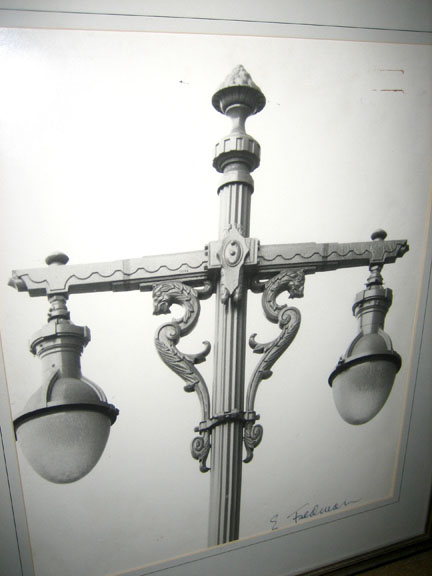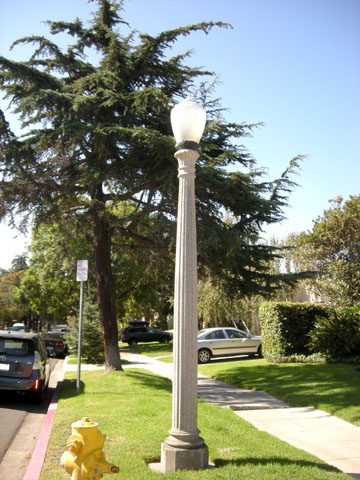Book tells story of Los Angeles streetlights

PHOTO from the book shows off L.A. lights’ artistic side.
Long-time resident, Eddy S. Feldman lived to age 93, and among his contributions was a book titled “The Art of Street Lighting in Los Angeles.” It was written in 1972 and published by Dawson’s Book Shop. Only 87 pages, it is now a collector’s item.
He was inspired to chronicle the history of street lighting in Los Angeles when he became a member of the board of Municipal Art Commissioners. This Board approved the design of lamps and lampposts. As a member of the Board since 1961, Eddy helped vote on the design of the streetlights.
These were submitted by the Board of Public Works (BPW) through its Bureau of Street Lighting. The BPW had “charge, superintendence and control” of the lighting of all streets, avenues, boulevards, alleys, lanes, and the lighting of all public parks, and …public buildings.
Looking back to 1867, the book says the streets of Los Angeles were illuminated at nighttime only by the lamps required by law. They had to be attached to the fronts of buildings. That same year a contract for lighting the streets by gas was granted. By 1882, when street lighting by electricity was authorized in this city of 12,000 residents, there were 136 gas lamps to guide people through the darkness. By 1971, however, there were 161,700 electric lighting units to match a population that had grown to almost three million.
Feldman’s interest in photography and streetlights resulted in the recording of the lights, many of which later were destroyed.

AREA lamppost.
Mayor Sam Yorty approved the first showing of Eddy’s photographs of light standards at Los Angeles City Hall. Later, the photographs were exhibited at the Pasadena Art Museum [now the Norton Simon Museum] as part of California Design XI, 1971. As a result, the lamp standards have been recognized as an art form.
The styles and types of streetlights seen around Los Angeles reflect the city’s history, architecture and dedication to historic preservation. For much of this, we can thank Eddy Feldman for capturing in writing and through his photographs one fascinating aspect of Los Angeles’ heritage.
By Judy Smith
Category: Entertainment


